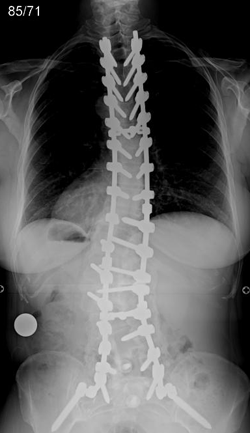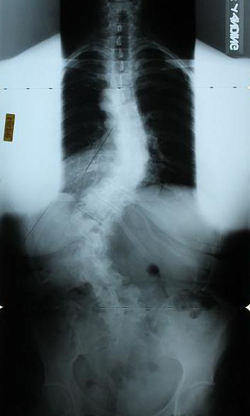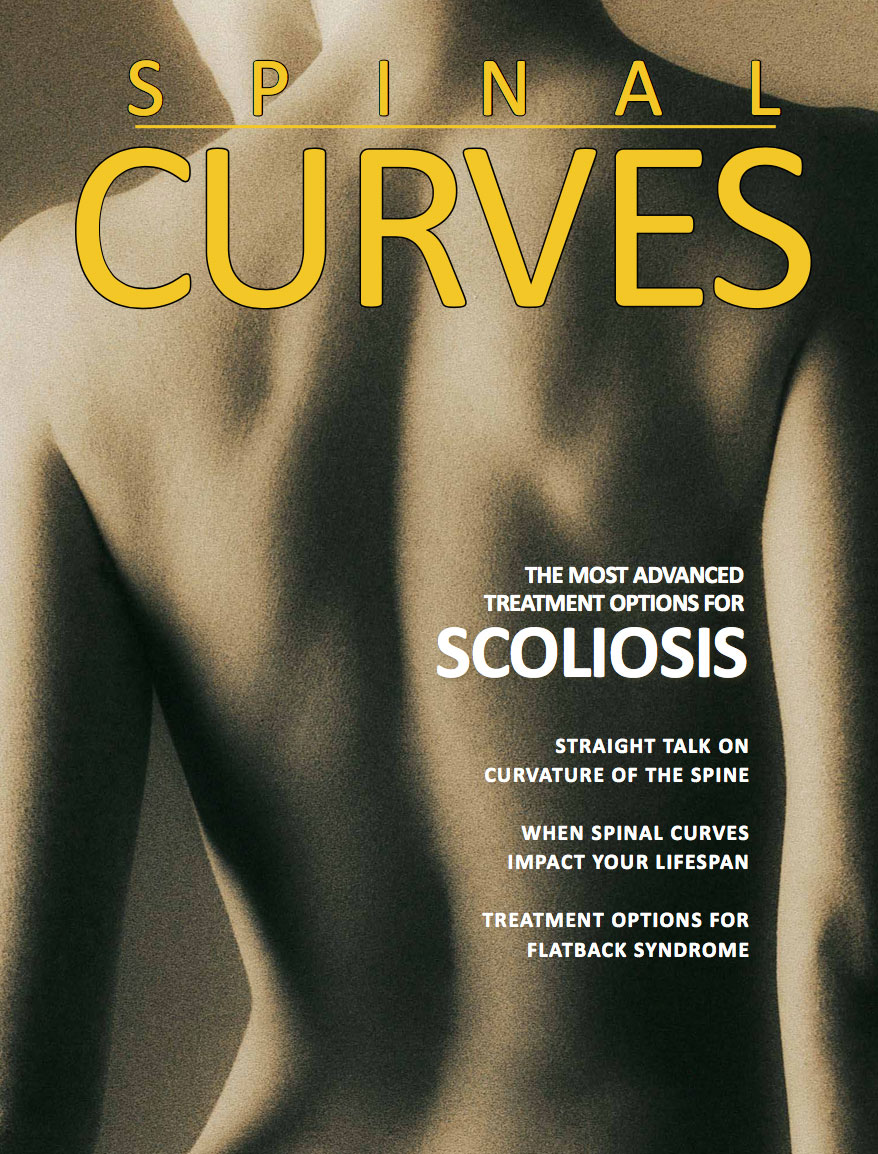Adult Scoliosis Surgery
 Adult scoliosis relates to anyone that has scoliosis and is eighteen or older. Adult scoliosis is different from pediatric scoliosis cases in that adults are skeletally mature and may have different treatment options. Scoliosis in adults is often accompanied with back pain and that is sometimes the reason they choose to get themselves evaluated. The other common reason adults ask for evaluation is progression of a curve and worsening physical deformity (including loss of height) that they had been told as an adolescent would “not progress”.
Adult scoliosis relates to anyone that has scoliosis and is eighteen or older. Adult scoliosis is different from pediatric scoliosis cases in that adults are skeletally mature and may have different treatment options. Scoliosis in adults is often accompanied with back pain and that is sometimes the reason they choose to get themselves evaluated. The other common reason adults ask for evaluation is progression of a curve and worsening physical deformity (including loss of height) that they had been told as an adolescent would “not progress”.
This adult scoliosis progression can have effects on pain, health related quality of life, function, and self esteem. There may be an accompanying loss of lung function or accelerated degenerative disc disease.
Older patients with adult scoliosis may experience osteoporosis, which can play a contributing factor. All of these factors add into the equation of what treatment is right for the patient.
Degenerative scoliosis is one of the most common types of scoliosis for older adults and may progress. This type of scoliosis is usually associated with stenosis and leg pain. Most treatment for adult scoliosis is non-operative. Conservative treatment options may include physical therapy or injection therapy.
A spine specialist will put together an individualized treatment program consisting of exercise and conditioning to help the patient increase function and energy, while trying to reduce the source of pain. Steroid injections may also be used to help control pain. Bracing is rarely used in adults as it tends to decondition the patient and fails to provide meaningful relief.


Surgery is used only after non-surgical options are tried. Many of these surgeries are similar to surgery in adolescents, with smaller surgeries, short lengths of stay, and quick recoveries. Other patients with severe degeneration, spinal imbalance, spinal stenosis, spinal cord compression, flatback syndrome, and lumbar degeneration may need more extensive reconstructions.
The length of the recovery is dependent of how extensive the surgery was and the age of the patient. Some patients will be back to full activity in three months, and some patients may need as long as six to nine months to properly heal. Many patients are thrilled and happy knowing the pain they suffered with is no longer going to bother them.
Similarly to pediatric and adolescent scoliosis, research and scientific data show that surgeon experience (10 years experience, scoliosis focus) lead to lower complications and better results for patients. (J Neurosurg Spine. 2019 Oct 25;32(2):207-220).






